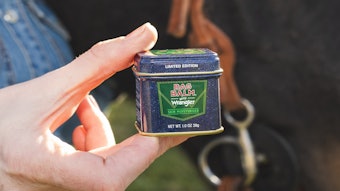- Senescence, the change in the biology of an organism as it ages after its maturity, may be one of the keys to unlocking the next step for anti-aging products.
- While use of humectants and emollients has been a common practice, the application of osmoprotective anti-senescence ingredients in human skin anti-aging has been practically unknown.
- Scientific discoveries in senescence pave the way for the development of a new class of anti-aging skin care products, opening a new field for innovative marketing.
Aging in mammals remains an unsolved mystery,1 but one that science, beauty brands and consumers would love to solve. Anti-aging itself is a recurring topic in the history of scientific research—and has become one of the primary targets of many cosmetic products. In fact, consumers across age and gender categories are increasingly drawn to anti-aging products, demanding more from their brands. Understanding senescence, the change in the biology of an organism as it ages after its maturity, may be a key to unlocking the next step for anti-aging products; more accurately, treatments based on anti-senescence could offer a magic bullet, single solution for the myriad causes and signs of aging skin.
These changes range from those affecting cells and their function to those impacting the whole organism. Senescence is not universal, and senescence is not observed in single-celled organisms that reproduce through the process of cellular mitosis. Cellular senescence in humans causes the cells to stop replicating themselves through the process of mitosis, resulting in a buildup of senescent cells in the body. The body’s ability to clear these cells decreases with age, and that triggers cellular degradation over a period of time.
The importance of cell senescence to the aging process has long been suspected. The latest research demonstrates that these cells play a role in age-related cellular degradation, including skin aging. When cells become senescent, they produce inflammatory biological agents that initiate chronic tissue inflammation leading to age-related ailments such as dementia, diabetes and skin aging.2
Anti-senescence has been proposed as a novel therapeutic strategy for vascular aging.3 The vascular cells have a finite life span when cultured in vitro, and eventually enter an irreversible growth arrest state called “cellular senescence.” Recently, senescent vascular cells have been demonstrated in human atherosclerotic lesions, a condition that damages tissue. Moreover, these cells cause increased levels of pro-inflammatory molecules, which initiate cellular inflammation—known to be one of the principal causes of skin aging (further discussion of inflammation is available in “Inflammation and Aging” [GCI March 2011], available at www.GCImagazine.com). The cascading effect of senescence on skin aging is thus clear.
Lessons From the Survivors of Hard Life
A large number of bacteria and tube worms survive extreme conditions of heat, cold and pressure—as evidenced in bacteria finds in hot water pools of Yellowstone National Park, ice shelves in Antarctica and thermal vents in deep ocean regions. Water is a key element for life. However, some organisms have evolved an amazing adaptation that allows them to survive under complete dehydration conditions for months or years until water is present again, at which time they resume their metabolism and growth. Anhydrobiosis (“life without water”) is found throughout all biological domains, for example in several species of eubacteria, archea, some fungi, certain invertebrate species, and “resurrection plants,” which survive near total desiccation, causing them to appear dead until rehydrated. Cellular anti-senescence agents act through compatible solutes to prevent cellular damage.
There are agents known to provide osmoprotection in non-mammalian organisms and plants. They include trehalose, maltose, sucrose, palatinose, cellobiose, gentiobiose, turanose, sorbitol, calcium chloride, amino acids such as proline and alpha-glutamate, peptones, taurine and taltrimide, among others. While use of humectants and emollients has been a common practice, the application of osmoprotective anti-senescence ingredients in human skin anti-aging has so far been practically unknown.
All the ingredients that speak to the biology of osmoprotection—sirtuins, DNA protection, mitochondria protection, glycation, telomerase, lifespan extension evoked by silent information regulator (SIR) proteins and so forth—interconnect with the ultimate goal: inhibit cell senescence. It is known that a close relationship exists among oxidative damage, senescence and aging. The examples of emerging evidence include: increasing nitric oxide (NO) bioavailability or endothelial NO synthase (eNOS) activity that activates telomerase and delays endothelial cell senescence; role of selenium in resisting senescence through its effects on cellular telomerase activity; activated oxygen free radicals cause peroxidative damage to all membranes and hasten senescence; carnosine, an endogenous free-radical scavenger, appears to be able to extend the life span of cultured cells, rejuvenate senescent cells, inhibit the toxic effects of amyloid peptide (A beta), malondialdehyde, and hypochlorite to cells, inhibit glycosylation of proteins and protein-DNA and protein-protein cross-linking, and maintain cellular homeostasis; potential anti-senescence gene Klotho (KL) has been found to participate in the progression of several different human cancers; cytokinin, 6-furfurylaminopurine (kinetin or Kin) influences on gene expression, cell cycle, stimulation of vascular development, delay of senescence and mobilization of nutrients; reactive oxygen species (ROS) induces senescence; and Bifidobacteria, which are a natural component of the bacterial flora of the human body and have a symbiotic bacteria-host relationship with human beings.
Aging, in fact, is associated with reduced numbers of beneficial colonic Bifidobacteria and impaired immunity, but the possible anti-senescence effects of Bifidobacteria are presently unknown. L-arginine may have an anti-senescence effect via the PI3K/Akt pathway; calcitonin gene-related peptide (CGRP) can counteract angiotensin II-induced senescence through downregulating the expression of NADPH oxidase and ROS production and increasing the production of Klotho; and Echinacoside, one of the phenylethanoids isolated from the stems of Cistanches salsa, a Chinese traditional herbal medicine, could protect cells from DNA damage and has potential anti-senescence activity.
Studies on the above clearly indicate controlling senescence may offer a singular ingredient that is the proverbial single bullet to manage skin aging.4–16
Science Behind the Science
Popular humectants such as sucrose, trehalose, maltose, cellobiose, gentiobiose, turanose and palatinose are very unusual osmoprotectants for the bacterium Sinorhizobium meliloti, because these compounds, unlike other bacterial osmoprotectants, do not accumulate as cytosolic osmolytes in salt-stressed S. meliloti cells. Rather, these compounds were catabolized during early exponential growth and contributed to enhance the cytosolic levels of the two endogenously synthesized osmolytes: glutamate and the dipeptide N-acetylglutaminylglutamine amide.17, 18 The dipeptide N-acetylglutaminylglutamine amide was discovered in the bacterium S. meliloti grown at high osmolarity, and subsequently shown to be synthesized and accumulated by osmotically challenged bacteria.19 Although the scientifically based and demonstrated information on senescence has become available, not to mention the ingredients technology to manage senescence, the development of practical consumer products targeted at controlling skin aging has eluded product developers. This is simply because there seems to be a historical lag period between a fundamental scientific discovery and its practical application.
Recent research has suggested the previously noted metabolite dipeptides may be useful for treating human skin aging.20 Both glutaminylglutamine amide and N-acetylglutaminylglutamine amide were found to have poor stability in typical water-based formulations. Fortunately, N-decanoyl-L-glutaminyl-L-glutamine amide, in its chirally correct21 molecular form, has shown excellent stability in aqueous-based systems. This discovery paves the way for the development of a new class of anti-aging skin care products based on preventing senescence, thus opening a new field for innovative marketing.
A large number of dipeptides and polypeptides are already known to provide skin anti-aging benefits. Although the relationship between cellular senescence antidotes in lower life forms to humans has not been established, the use of bacterial protection agents for human skin anti-aging—for example, the extracts of thermal tube worms and cyanobacteria—has precedence. The inclusion of N-decanoyl-L-glutaminyl-L-glutamine amide adds a new chapter to the arsenal of fight against human skin aging for a “forever younger” look.
For a related discussion, please read New Solution for Anti-aging.
References
- Y Wang et al, FEBS Lett, 585(7) 986–94 (2011)
- SS Wang, Wall Street Journal (Nov 3, 2011)
- I Komuro, Japanese Journal of Geriatrics, 43(3) 347–50 (2006)
- Moon et al, J Med Food,12(3) 485–92 (2009)
- Havashi et al, Pharmacol Ther,120(3) 333–339 (2008)
- Q Liu et al, Effects of sodium selenite on telomerase activity and telomere length, Sheng Wu Hua Xue Yu Sheng Wu Wu Li Xue Bao (Shanghai), 35(12) 1117–1122 (2003)
- Lester, Plant Sci, 160(1) 105–112 (2000)
- Wang et al, Biochemistry (Mosc), 65(7) 869–871 (2000)
- Pan et al, Tumour Biol, 32(4) 729–35 (2011)
- Mik et al, Phytochemistry, 72(8) 821–831 (2011)
- Campaner et al, Cell Cycle, 9(18) 3655–3661 (2010)
- Fu et al, Microbiol Immunol, 54(10) 578–583 (2010)
- Zhong et al, Diabetes Res Clin Pract, 89(1) 38–45 (2010)
- Zhou et al, Atherosclerosis, 213(1) 92–101 (2010)
- Xie et al, Pharmazie, 64(11):752–754 (2009)
- Minamino, Nihon Rinsho, 67(4):715–722 (2009)
- Gouffi et al, Int J Food Microbiol, 55 (1–3): 171–14 (2000)
- J Bacteriol, 180 (19) 5044–5051 (1998)
- Sagot et al, Proc Natl Acad Sci USA, 107(28) 12652–12657 (2010)
- S Gupta and L Walker, U.S. Patent Application Publication 20110190202 (2010)
- SGupta and L Walker, Chiral Skin Care, GCI 178 11 44–46 (Nov 2010)










